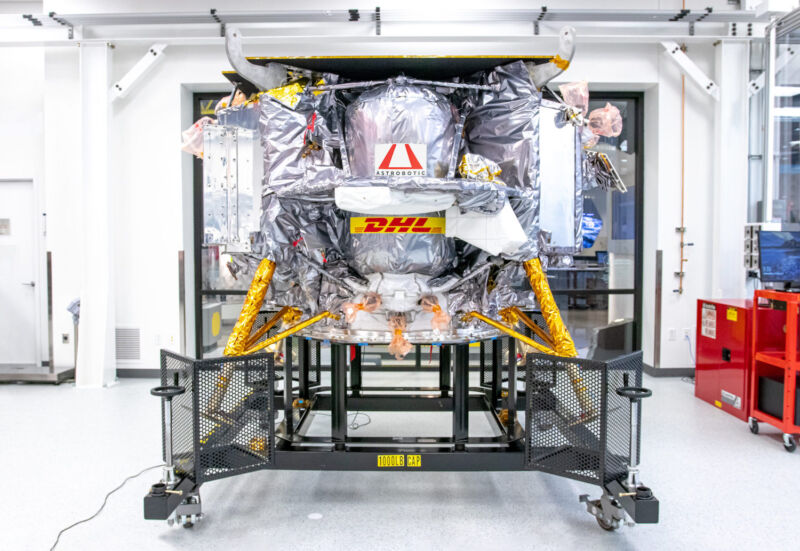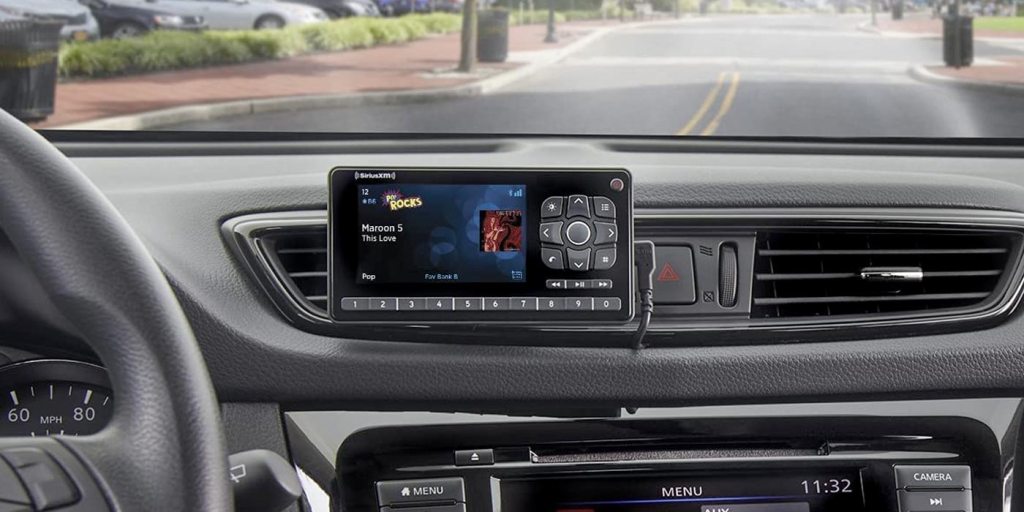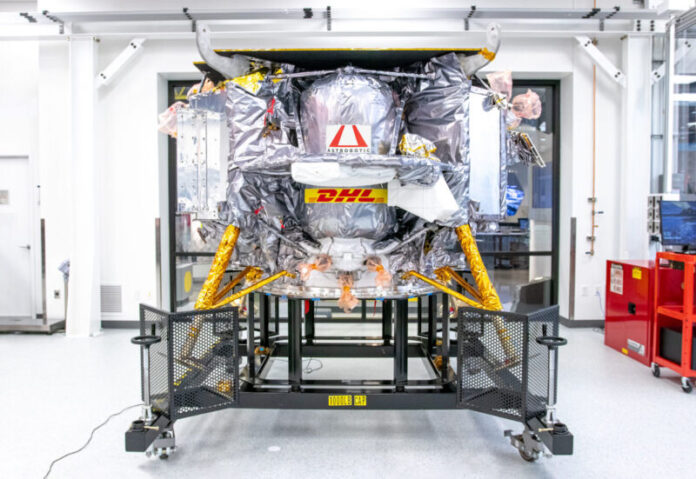
Enlarge / Astrobotic's Peregrine lander, with some of its propellants visible, before shipment from the company's headquarters in Pittsburgh to the launch site in Florida. (credit: Astrobotic)
Seven months after its first lunar lander fell short of reaching the Moon, Astrobotic announced Tuesday that the spacecraft was stricken by a valve failure that caused a propellant tank to burst in orbit. The company's next landing attempt, using a much larger spacecraft, will include fixes to prevent a similar failure.
Astrobotic's first Peregrine lander, which the company called Peregrine Mission One, launched January 8 aboard United Launch Alliance's first Vulcan rocket. But soon after separating from the rocket in space, the lander ran into trouble as it stepped through an activation sequence to begin priming its propulsion system.
A review board determined "the most likely cause of the malfunction was a failure of a single helium Pressure Control Calve called a PCV—Pressure Control Valve 2, within the propulsion system," said John Horack, a space industry veteran and professor of aerospace and mechanical engineering at Ohio State University.
Read 28 remaining paragraphs | Comments
Ars Technica - All contentContinue reading/original-link]




